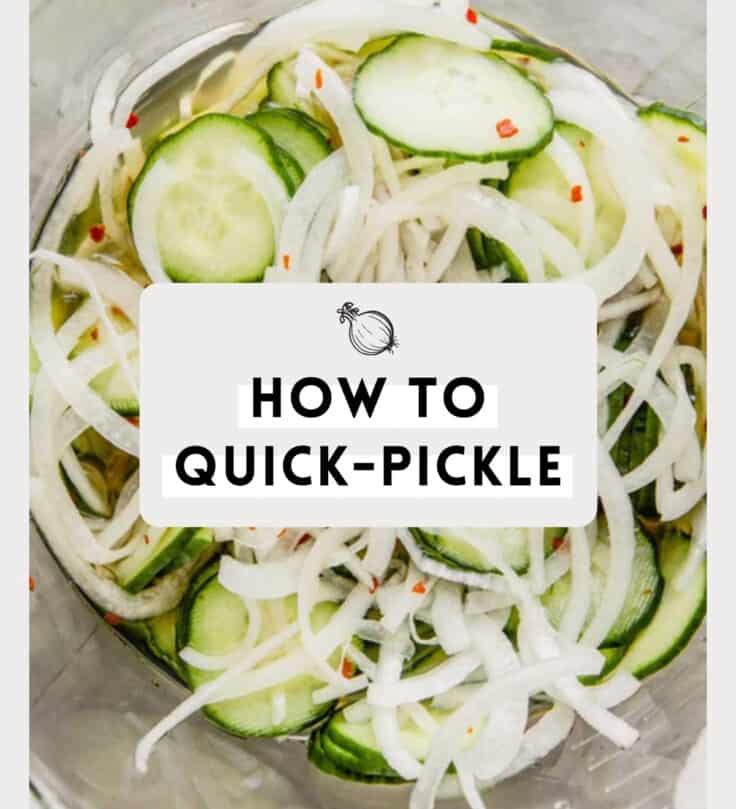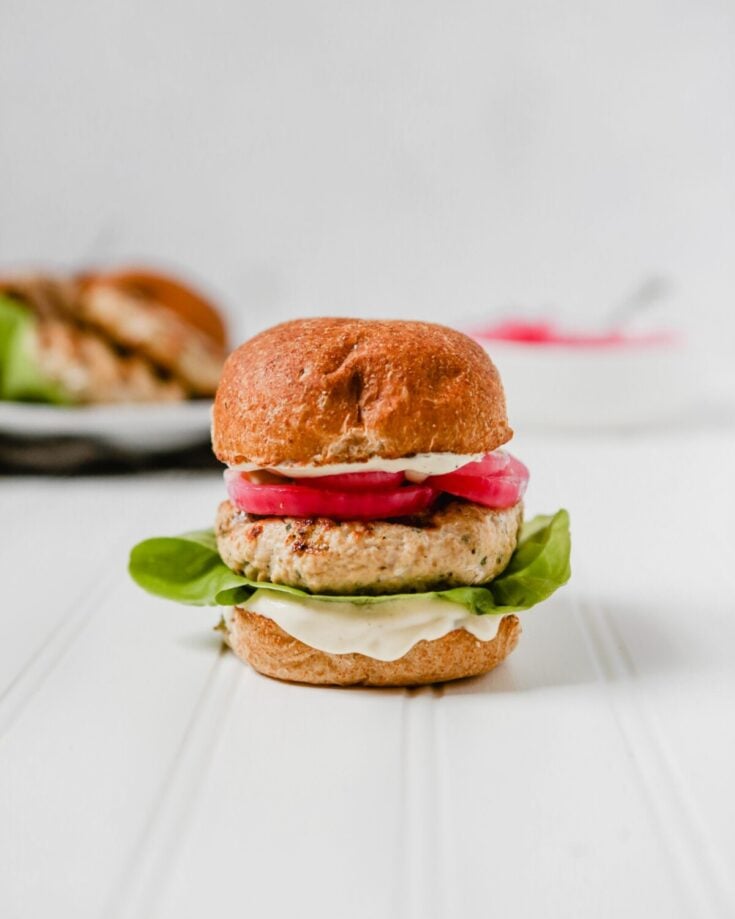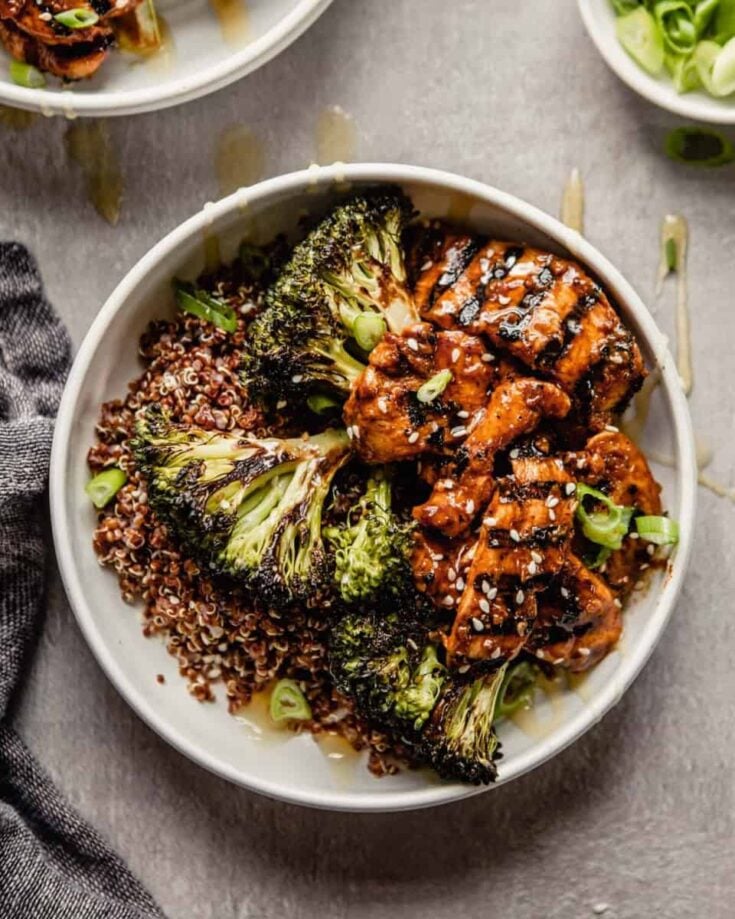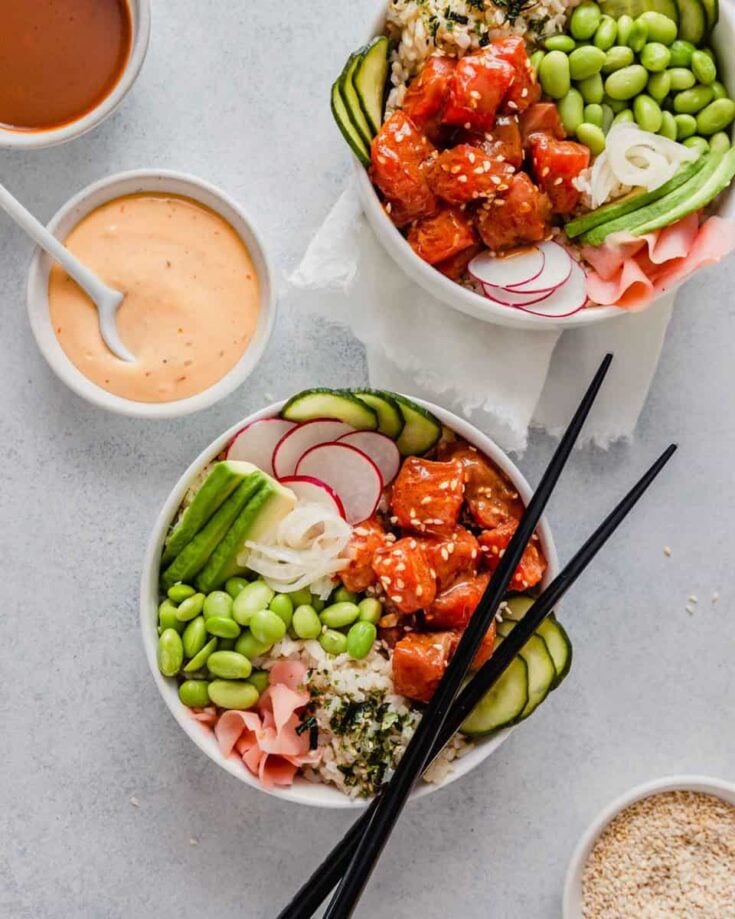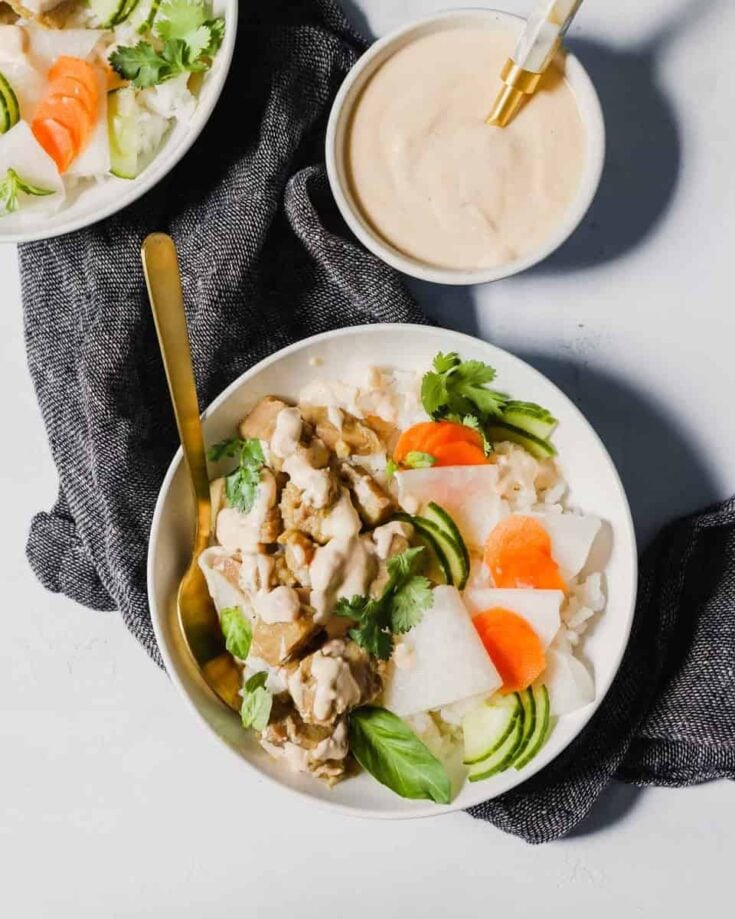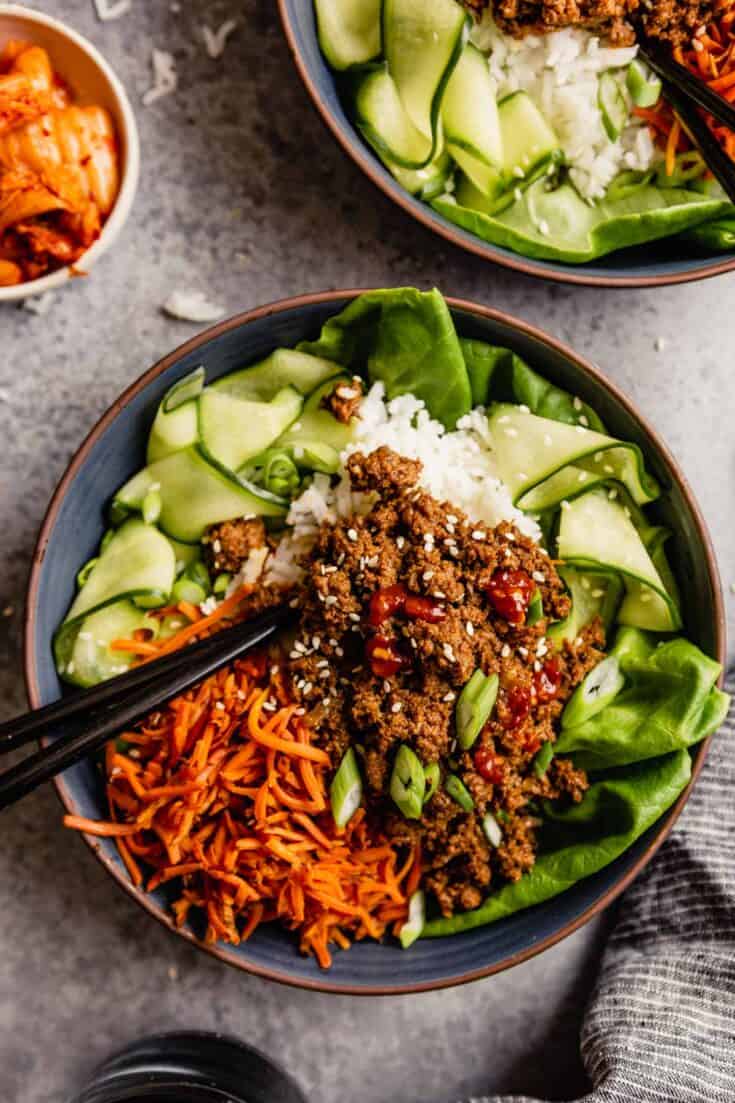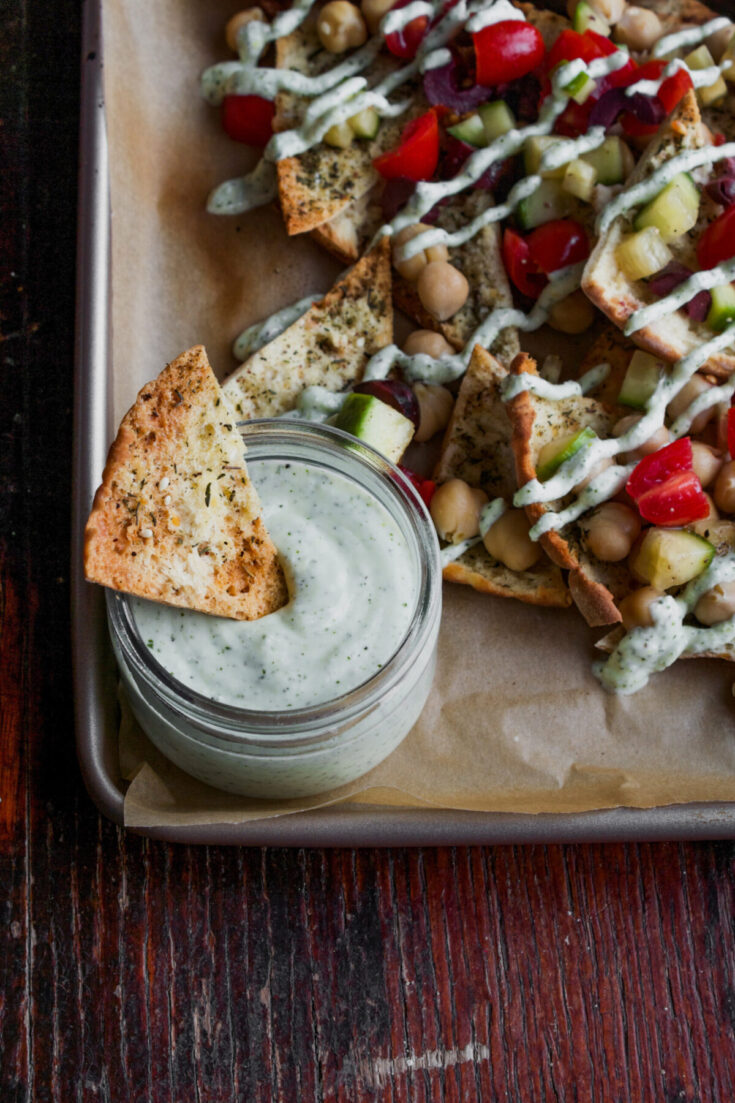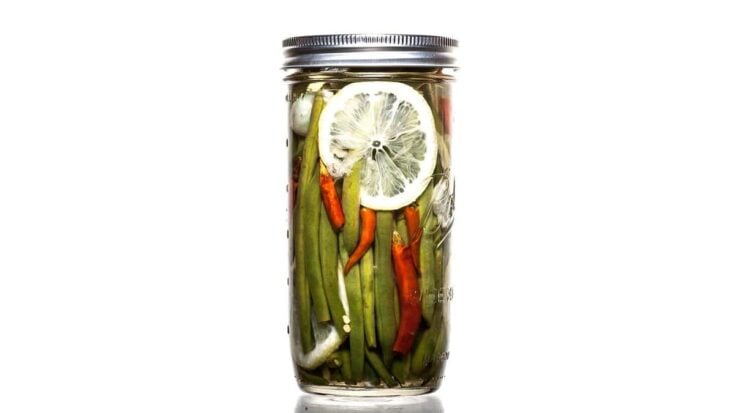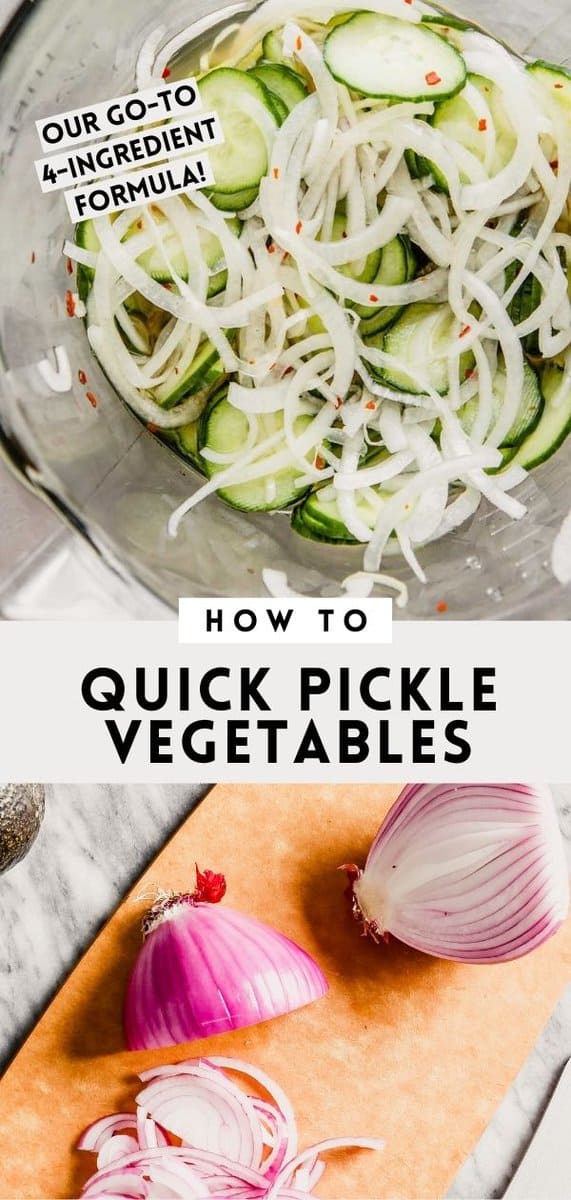Quick pickling vegetables is one of the most important techniques to know in the kitchen. It’s key to brightening up a dish, adding crunch and balancing flavors. This article will dive into all things quick-pickling—you’ll know how to pickle anything in no time!
Why Quick-Pickle Vegetables
Quick-pickling is one of the easiest ways to add seriously BIG flavors to your home-cooked meals. Quick pickled vegetables are great for finishing dishes and dressing up entrées so they look just as great as they taste.
It’s a good idea to keep a batch of pickled red onions on hand because they’re the perfect addition to sandwiches, salads, burgers, hummus, tacos and so much more. But onions aren’t the only vegetable that takes well to being pickled!
Quick pickling any assortment of vegetables is quite simple and can be done in mere minutes. No long simmer time, no extra long preparations and no long wait whatsoever.
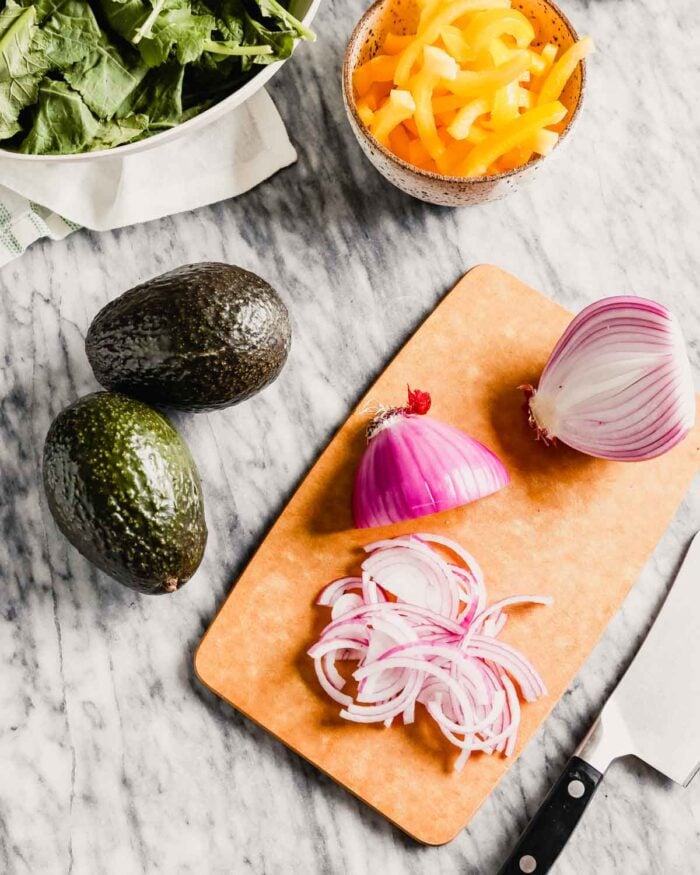
How to Quick-Pickle Vegetables
It’s quick and easy, so let’s get into it.
- First, select your vegetable(s) to turn into a pickle-y delight.
Some recommendations include but are not limited to: yellow/red/white onions, cucumber, carrots, radishes, green beans, beets, turnips, bell peppers, jalapenos, cabbage and then some. - Once you’ve chosen a selection of vegetables, make sure they’re thoroughly rinsed and cut/trimmed to size. At ZK, we would recommend you cut them into thin slices, as the pickling process runs much smoother that way.
- Next, you’ll need to gather white vinegar, water, honey (or sugar) and kosher salt. This is really all you need. Sometimes you’ll see recipes using apple cider vinegar instead of white vinegar. You can use either; the only difference is a slight change in flavor. You can always try both ways to figure out which you prefer!
- Combine your vinegar, water, sweetener and salt together in a small saucepan and bring to a boil. Immediately pour hot brine over vegetables in a bowl, making sure all of the vegetables are submerged. From here, you can leave them submerged to hang out for a bit—a minimum of 15 minutes though the longer, the better.
That’s it! Now you’ve got some perfectly pickled vegetables to last you three whole weeks when stored in an airtight container in the refrigerator.
If you enjoy some uber-tangy pickled products, use a full cup of vinegar and skip out on the water altogether. Just the opposite? If you’d prefer it even milder, use ½ cup of vinegar and ½ cup of water instead.
Formula for Quick Pickling
- 2 cups thinly sliced vegetables
- ¾ cup white vinegar
- ¼ cup water
- 1 tablespoon honey (or sugar)
- 2 teaspoons kosher salt.
Feel free to incorporate some optional add-ins for even more flavor. Smashed garlic cloves, whole peppercorns, mustard seeds, red pepper flakes, and dried bay leaves are a few classics.
Recipes That Use Quick-Pickled Vegetables
Are you searching for some further pickling inspiration? Keep reading to find some great recipes that highlight your newly pickled vegetables. We also break down all the deets in this article about Quick Pickled Red Onions if you’re ready to put your pickling skills to the test.
Make use of those tangy pickled vegetables hanging out in the fridge! Most dishes benefit from a bit of acid at the end and these recipes prove that to be true. Featuring dishes that use pickled red onions (our fave) to pickled carrots, cucumbers, daikon and more!
Aside from the recipes below, platy around with adding pickled onions to Sautéed Broccoli, Roasted Green Beans, and our Butter Lettuce Salad.
As I mentioned before, tacos make for a great match with pickled onions. This recipe for Blackened Fish Tacos with Creamy Lime Sauce is sure to satisfy your tastebuds. Between the smoky and slightly spicy flavor palette, these are a crowd-pleaser! Use whatever fish you like best, but don’t forget to toss some pickled red onions over top before these tacos disappear into your belly.
Another great recipe to taco ‘bout are these Spicy Harissa Lamb Tacos. This recipe modernizes the good ‘ol taco while also maintaining the basic components. Layer on your favorite selection of pickled veggies and you’ll find it hard to believe just how great they look and taste!
If you’re in the mood for a slab of meat sandwiched between buns and tumbling with toppings, then this recipe for Juicy Dijon & Thyme Turkey Burgers is sure to do the trick. Now, this dish is surely one that you should let Snapchat eat first because it’s so gosh darn pretty!
Bulgogi Bowls! This recipe for Bulgogi Bowls with Quinoa and Roasted Broccoli is totally customizable and pairs really well with pickled cucumbers on top. And if you’ve got kimchi hanging out in the fridge, toss that on too. This Korean dish is bursting with flavor and even reheats well, meaning leftovers!
There’s no way I’d miss this one! Salmon Poke Bowls with Orange-Sesame Sauce pair well with almost every pickled vegetable you can think of. Try pickled cucumbers, onions, radishes, or ginger for the ultimate combination of tangy and mouth-watering at the same time. Plus, this dish calls for salmon, a ZK favorite!
Vegetarian Banh Mi Bowls wouldn’t be the same without a nice assortment of pickled vegetables. Pickled Daikon is a classic on Banh Mi sandwiches, so it only makes sense that it’s included in Banh Mi bowls. This recipe also calls for pickled carrots and cucumbers but is entirely customizable.
Our go-to recipe for Ground Beef Bulgogi! Quick, easy and PACKED with flavor from charred carrots and gorgeous pickled cucumber ribbons. Pickled with rice vinegar, the pickled cucumbers add a mild tang that pairs well with the sweet and spicy bulgogi.
These Greek Nachos with Feta-Yogurt Sauce are all the rave! This recipe is a party pleaser but also makes for a great midday snack. Make sure to plop on a hefty serving of pickled onions because it makes for the perfect tangy bite to really round out all the flavors.
We love these Lemon-Chile Green Bean Pickles from Allison Roman at Bon Appétit. They are just the perfect snack food with just the right amount of zest. Plus, how great these go in a bloody mary, words cannot express!
If you give this super easy quick pickling formula a try, be sure to let me know! Leave a comment with a star rating below. You can also snap a photo of your dish, dressed in pickled veggies & tag @zestfulkitchen on Instagram. We love hearing about and seeing your ZK creations!
We are always here to help, so if you have any quick pickling problems or kitchen cooking questions, leave a comment or send an email to lauren@zestfulkitchen.com. We love to hear what ya’ll are thinking of and how we can further help you to gain confidence in the kitchen.
